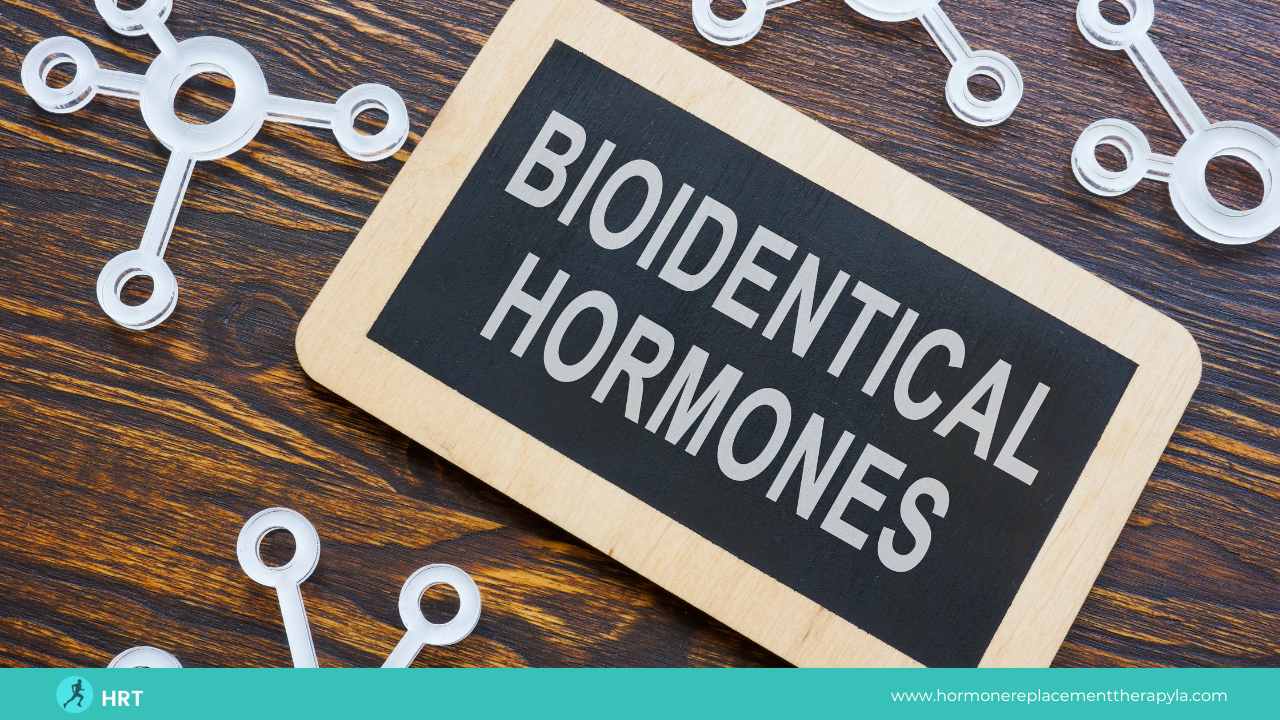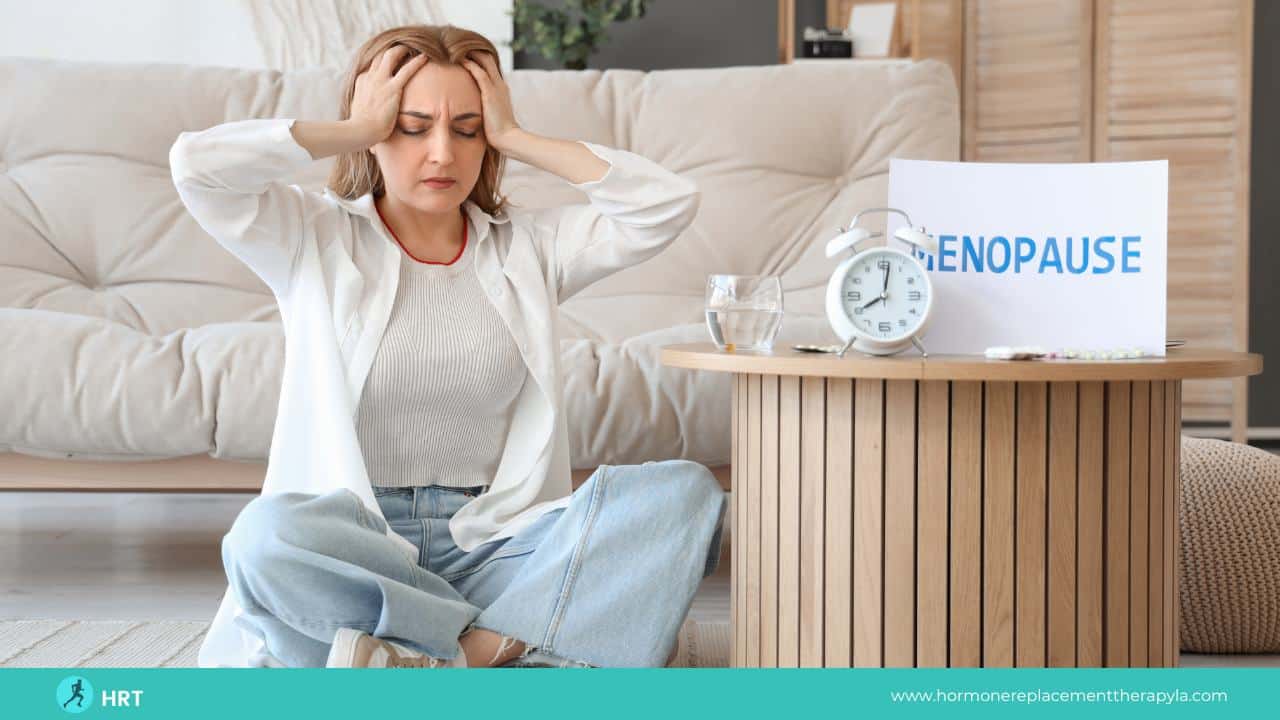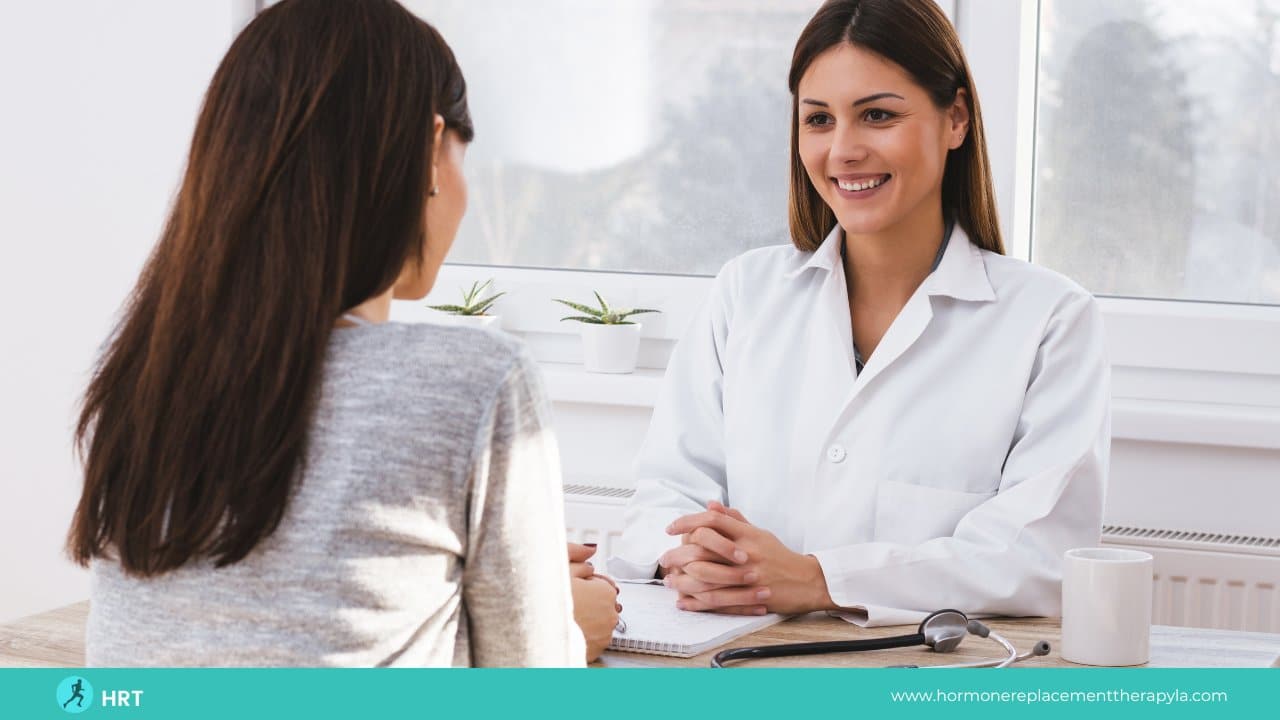GH and Testosterone, while crucial for health and fitness, have distinct characteristics and impacts on the body. Understanding their unique roles can help tailor your health and fitness regimen for optimal results.
This article will explore growth hormone vs. testosterone and discover their unique roles and interplay in shaping your health and fitness.
Growth Hormone vs. Testosterone: What Are The Differences?
Growth hormone and testosterone are two essential hormones that your body needs. Though they have a few similarities, they are different in their action and function.
Before we go deeper with comparing and contrasting growth hormones and testosterone, let’s check their significant distinction.
| Aspect | Growth Hormone (GH) | Testosterone |
| Type of Hormone | Peptide hormone | Steroid hormone |
| Primary Production Site | Pituitary gland | Testicles in men; ovaries and adrenal glands in women |
| Key Roles | Stimulates growth and cell repair; boosts metabolism | Develops male sexual characteristics; promotes muscle and bone health |
| Effect on Muscle Mass | Contributes to muscle growth, but less than testosterone | Significantly increases muscle mass and strength |
| Influence on Fat Distribution | Aids in reducing body fat | Influences body fat distribution |
| Impact on Bone Health | Crucial for growth and density of bones | Essential for maintaining bone density and strength |
| Role in Metabolism | Influences carbohydrate and fat metabolism | Affects overall metabolism, including muscle metabolism |
| Effect on Libido and Sexual Function | No direct effect | Crucial for libido and sexual function in men |
| Regulation Mechanism | Controlled by growth hormone-releasing hormone (GHRH) from the hypothalamus | Regulated by luteinizing hormone (LH) from the pituitary gland |
| Age-Related Changes | Declines with age, affecting overall growth and metabolism | Declines with age, especially after 30, affecting sexual function and muscle mass |
Now, let’s explore how HGH and testosterone differ from each other.
Fact check: Androgen And Testosterone.
All About Growth Hormone
Growth Hormones, also known as somatotropins, play a crucial role in the body by overseeing growth, cell regeneration, and metabolism, similar to a master conductor.
The essential peptide hormone originates from the somatotrope cells located in the anterior part of the pituitary gland that sits at the base of the brain. The hypothalamus controls the production and release of this hormone by using Growth Hormone-Releasing Hormone (GHRH) to signal the need for GH and somatostatin to regulate its levels.
GH levels peak during childhood and puberty, causing growth spurts. However, GH production gradually declines as we age, often leading to decreased muscle mass.
How Does Growth Hormone Work?
Growth Hormone (GH) operates in the body through two main methods: direct and indirect actions.
Directly, GH binds to cells, triggering growth and metabolic changes.
Indirectly, it increases Insulin-like Growth Factor-1 (IGF-1) levels, primarily produced in the liver. IGF-1 then circulates in the body, influencing the growth and metabolism of various tissues.
GH promotes growth in bones and cartilage, boosts protein production, aids in breaking down fats, impacts blood sugar levels, and alters nutrient processing.
The Functions Of Growth Hormone
Here are the bodily functions accomplished by the human growth hormone.
- Linear Bone Growth: Human Growth Hormone stimulates IGF-1 production, promoting linear growth by acting on long bone epiphyseal plates during childhood and adolescence, which is crucial for standard height.
- Increased Muscle Mass: After injury or strength training, it triggers protein synthesis and muscle cell proliferation, increasing lean body and muscle mass.
- Fat Metabolization for Energy: GH promotes the breakdown of triglycerides into free fatty acids and glycerol, reducing fat utilization for energy and preserving body protein and carbohydrates.
- Glucose Levels Regulator: GH can increase blood glucose levels by promoting gluconeogenesis in the liver. But it also stimulates insulin secretion, which may lower blood glucose.
- Increased Mineralization of Bone: GH and other hormones like calcitriol promote bone strength by increasing osteoblast activity and mineralization through calcium and phosphorus deposition.
The Risk Of Human Growth Hormone Deficiency
Low growth hormone levels, or GHD, whether in children or adults, can lead to various health issues.
In Children-
- Stunted Growth – slower growth rate, leading to short stature.
- Delayed Puberty
- Increased Fat Masst, especially around the waist.
- Poor Bone Density – might lead to weaker bones, increasing the risk of fractures.
In Adults-
- Decreased Muscle Mass and Strength
- Increased Body Fat
- High cardiovascular risk due to changes in body composition and metabolism.
- Reduced Bone Density
- Emotional and cognitive effects – feelings of anxiety, depression, and a decrease in cognitive functions such as memory and concentration.
- Fatigue and Decreased Stamina.
The Symptoms Of Low Growth Hormones
Growth hormone deficiency (GHD) symptoms can vary between children and adults.
In children, the symptoms may include-
- Noticeably slow growth with normal body proportions.
- Immature appearance compared to peers.
- A chubby younger body build.
- Insufficient hair growth.
- Delayed puberty.
In adults, the symptoms of growth hormone deficiency may include-
- Muscle or joint pain.
- Swelling (fluid retention).
- Numbness in the hands.
- High Cholesterol Levels.
- Hair thinning or baldness.
The Diagnosis Of Low Growth Hormone Levels
Diagnosing growth hormone deficiency (GHD) involves several steps to confirm abnormally low GH levels.
- Patient History and Physical Exam: Doctors assess symptoms, health history, childhood growth patterns, family history, body proportions, and signs of pituitary issues.
- GH Stimulation Tests: After being stimulated by agents like arginine, clonidine, glucagon, or insulin, the release of GH can be measured through blood samples. If the peak GH response is equal to or less than 10 ng/mL, it indicates Growth Hormone Deficiency (GHD).
- IGF-1 and IGFBP-3 Blood Tests: GH stimulates specific proteins. Low age-adjusted levels of IGF-1, which strongly correlates to GH levels, aid in diagnosing GHD.
- MRI of Pituitary Gland: Radiological scans check pituitary size and structure for GH production interference.
- Assessment of Bone Age: A bone age assessment can be done using X-rays. This helps determine the age of the bone accurately.
- Other Hormone Tests: Evaluating cortisol, TSH, T3/T4, FSH, LH, testosterone, estradiol & prolactin can uncover issues impacting GH’s endocrine system.
The Treatment of Low Growth Hormone Levels
Here are the GHD treatments that your healthcare provider may prescribe.
- Growth Hormone Replacement: Doctors may prescribe growth hormone therapy or rhGH injections to replace deficient hormone levels. The treatment is personalized and administered daily or weekly. For children and adolescents, it should continue until full height is reached or epiphyseal plates close.
- Monitoring and Follow-Up: While taking rhGH, doctors will monitor you by testing IGF-1 levels/growth markers to ensure proper dosing. The duration of the treatment is typically long-term, lasting for several years.
- Lifestyle Changes: Good nutrition and exercise improve growth hormone therapy results for muscle gain, weight loss, and overall well-being.
When Do You Need Growth Hormone
In some instances, both children and adults may need growth hormone therapy for medical reasons.
- Children With Growth Disorders.
- Adults With Growth Hormone Deficiency.
- Muscle Wasting Disorders, Like HIV/AIDS.
- Short Bowel Syndrome.
- May Treat Burns, Surgery, Bone Fractures, Etc.
However, there are certain situations in which growth hormone therapy is contraindicated or prescribed with caution.
- With Normal Or Adequate Natural Growth Hormone Production.
- In Active Cancer Or a History Of Cancer Recurrence.
- Cardiovascular Issues.
- Respiratory Or Fluid/Electrolyte Complications.
- Diabetic Retinopathy.
Ways To Boost HGH Naturally
Here are some ways to help naturally promote your body’s growth hormone (GH) production.
- Get Enough Sleep as During Deep Sleep, Your Body Secretes The Highest Amount Of Growth Hormone (GH).
- Do High-Intensity Interval Training.
- Lose Belly Fat.
- Reduce Sugar/Refined Carbs.
- Take Amino Acid Supplements (Arginine, Lysine, And Ornithine).
- Try Intermittent Fasting.
- Manage Stress.
What Are The Benefits Of Growth Hormone Therapy
Growth hormone therapy offers several health benefits, including-
- Improved Growth Rate And Normal Development In Children And Adolescents.
- Increased Muscle Mass.
- Reduced Body Fat.
- Improved Bone Density.
- Enhanced Energy Levels.
- Better Cardiac Health.
- Improved Psychological Well-being.
What Are The Side Effects Of Growth Hormone Therapy
Some potential side effects of synthetic growth hormone replacement therapy may include:
- Fluid Retention and swelling.
- Joint And Muscle Pain.
- Stiffness And Occasional Numbness/Tingling Sensation In The Hand.
- Carpal Tunnel Syndrome.
- Risk Of Diabetes.
- Abnormal Growth Patterns – Disproportionate Bone Lengths Or Mismatched Growth
- Between Long Bones And The Spinal Column.
- Gynecomastia, Or Enlargement Of Breast Tissue In Men.
- Cardiovascular Issues – Hypertension, Arrhythmias, Or Cardiomyopathy.
All About Testosterone
Testosterone is essential for men’s growth and development, particularly during adolescence and early adulthood. It is crucial for men’s health as it assists with voice deepening and muscle growth. Women produce it in smaller quantities.
The brain regulates its production through the hypothalamus and pituitary gland, using hormones GnRH and LH in a feedback loop. However, yearly testosterone production decreases by 1% after men turn 30.
How Does Testosterone Work?
Testosterone is primarily produced in the testicles in men, with smaller amounts made in women’s ovaries and the adrenal glands. Testosterone binds to cell receptors, affecting muscle, bone, male traits, mood, and red blood cell production.
The hypothalamic-pituitary-gonadal axis regulates the hormone’s levels through a feedback mechanism involving the Luteinizing hormone (LH). In terms of distribution, testosterone travels in the bloodstream, mostly bound to proteins, but a small portion remains free and active.
This balance of testosterone is essential for overall health and well-being.
Function Of Testosterone
Testosterone serves several critical biological functions throughout a man’s life, including-
- Sexual Development: Testosterone triggers the development of male reproductive organs and secondary sexual characteristics such as facial and body hair growth, a deepening of voice, and muscle development during puberty.
- Libido and Erections: Testosterone regulates sexual desire and arousal in men and affects the nerves involved in triggering erections.
- Sperm Production: Testosterone aids in sperm formation by promoting germ-cell differentiation and collaborating with follicle-stimulating hormones to stimulate sperm maturation.
- Fat Distribution: Testosterone helps regulate where men store fat, with less storage around the hips and thighs.
- Muscle Growth & Strength: It helps build muscle mass and increases lean body strength by signaling muscle repair and growth after injury or strain.
- Bone Density: Testosterone helps strengthen and maintain bone mineral density in men.
The Risk Of Low Levels of Testosterone
Having abnormally low testosterone levels (hypogonadism) poses several health risks for men. These include-
- Reduced Muscle Mass And Strength.
- Increased Body Fat, Leading To Obesity And Metabolic Issues.
- Osteoporosis.
- Cardiovascular Disease Risk Due To Elevated LDL and Triglycerides And Lowering HDL Levels.
- Depression And Mood Changes Like Depressed Mood, Irritability, Fatigue, And Cognitive Issues.
- Reduced Sex Drive.
- Erectile Dysfunction.
- Infertility In Some Cases.
The Symptoms Of Low Testosterone
The symptoms of low testosterone, also known as “low T,” can vary, including-
- Reduced Sex Drive.
- Erectile Dysfunction.
- Loss Of Armpit And Pubic Hair.
- Shrinking Testicles.
- Hot Flashes.
- Fatigue Or Extreme Tiredness.
- Sleep Problems.
- Decreased Muscle Size And Strength.
- Bone Loss.
- Gaining Fat, Particularly Around The Belly.
- Depression.
- Trouble Concentrating.
The Diagnosis Of Low Testosterone
Diagnosing low testosterone involves multiple pieces-
- Patient History Evaluation: Doctors assess hypogonadism symptoms and risk factors, including low sex drive, erectile dysfunction, tiredness, and muscle wasting.
- Physical Exam: Male hypogonadism symptoms: hair loss, breast tissue enlargement, small testes, and genital abnormalities.
- Blood Tests: Diagnosis of low testosterone requires two or more blood tests measuring total and free testosterone levels. Normal levels range from 300 to 1,000 ng/dL.
- Additional Hormone Measurements: Test LH, FSH, and prolactin levels to distinguish primary vs secondary hypogonadism.
- Genetic Test: Doctors may suggest genetic testing for Klinefelter syndrome by examining sex chromosomes in younger patients with deficient levels.
The Treatment of Low Testosterone
Here are the standard treatment approaches for low testosterone levels.
-
- Testosterone Replacement Therapy (TRT): several types of TRT are available – Injections, Gels, patches, Implantable Pellets, and Oral Therapy.
- Monitoring: The doctor will keep regular monitoring of testosterone levels, prostate health, and blood counts to adjust dosages and ensure safety.
- Lifestyle Changes: A balanced diet, regular exercise, weight management, and reduced alcohol intake can naturally increase testosterone levels.
- Managing Underlying Conditions: treating obesity, diabetes, or sleep apnea can improve testosterone levels and health.
When Do You Need Testosterone
Here are some reasons why you may need testosterone therapy.
- Clinical Symptoms Of Low Testosterone – Reduced Sex Drive, Erectile Dysfunction, Fatigue, Loss Of Muscle Mass, And Depression
- Confirmed Low Testosterone Levels
- Age-related decline
- After Certain Medical Treatments Like Chemotherapy Or Radiation Or Conditions Like Testicular Injury
- Hypothalamic Or Pituitary Disorders
- Chronic Health Conditions Like Obesity, Diabetes, Or Hiv/Aids
Ways To Boost Testosterone Naturally
There are several natural ways to boost testosterone levels, including-
- Regular exercise, notably weightlifting and high-intensity interval training.
- Eat protein, healthy fats, and complex carbs for healthy testosterone levels. Foods rich in zinc, magnesium, and vitamin D, like salmon, eggs, nuts, and seeds, can help.
- Stress Reduction through techniques such as meditation, yoga, or deep breathing
- Sleep for 7-8 hours of sleep per night.
- Limit Alcohol and Drug Use
- Herbal supplements like ashwagandha, ginger, and saw palmetto may support healthy testosterone levels, but their effectiveness requires more research.
What Are The Benefits Of Testosterone Hormone Therapy
Some of the potential benefits of Testosterone Replacement Therapy include-
- Improved Sexual Function.
- Enhance Libido.
- Increased Muscle Mass And Strength.
- Improved Mood And Energy Levels.
- Improved Bone Density.
- Improved Cognitive Function.
- Reduced Body Fat.
What Are The Side Effects Of Testosterone Hormone Therapy
Here are some common side effects of testosterone therapy:
- Sleep Apnea.
- Fluid Retention.
- Breast Enlargement Or Tenderness Or Gynecomastia.
- Decreased Testicular Size.
- Acne And Oily Skin.
- Reduced Sperm Count.
- Mood Fluctuations: Mood Swings, Increased Aggression, Or Irritability.
- Increased Red Blood Cell Count.
Growth Hormone Vs Testosterone: The Similarities
While testosterone is the primary male sex hormone, HGH is involved in growth and cell regeneration. However, there are a few similarities between Testosterone and HGH.
- Testosterone and HGH both help build lean muscle
- Both help increase metabolism and fat-burning.
- Both support stronger bones and can help improve bone density.
- HGH and testosterone can both increase energy levels and stamina.
- Both hormones can help a healthy mental self-image and may positively impact mood and well-being.
Does HGH Increase Testosterone?
HGH does not directly raise testosterone levels, but it may support production. It can improve fitness and sleep and is suitable for maintaining healthy testosterone levels.
Also, when HGH and testosterone are at the proper levels, they can work together well, especially in making muscles stronger and reducing fat. Although HGH might help the testosterone-making testicles work better, the exact way they interact is still not completely understood.
Bottom Line
Growth hormones vs. testosterone – two of the most essential hormones in your body. While they have some similarities, they are different in their actions, benefits, needs, diagnosis, and treatment.
So, contacting a professional expert in the hormone world is crucial while managing these hormones. Take your phone and call to make an appointment to revive your life with our state-of-the-art technology and treatment options.






